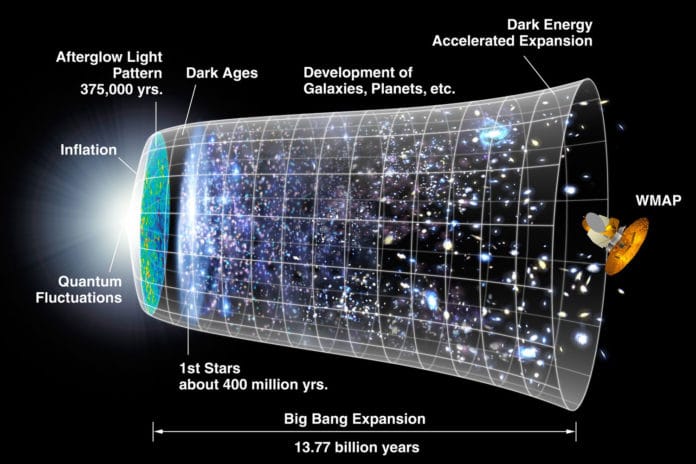The origin of life (abiogenesis) is still a great mystery in science. Regardless of all we know from science and physics, the specific insights about how and when life started, and furthermore, whether it began to somewhere else, are mostly speculative.
To know more about the emergence of life in an inflationary universe, the study combines biological and cosmological models. Scientists observed how life’s building blocks could spontaneously form in the world- a process known as abiogenesis.
Studies on life’s origins are limited to the specific conditions on Earth. Thus, most of the reviews focus on the essential components common to all known living things: RNA and DNA.
According to the RNA world hypothesis, earlier life forms may have used RNA alone for the storage of genetic material. RNA was the primary living substance, mainly due to RNA’s ability to function as both genetic and catalytic roles before the DNA-protein world came into being.
RNA is a polymer, meaning it is made of chemical chains, in this case, known as nucleotides. However, a more fundamental and unsolved problem is how an RNA polymer can last long enough to have a self-replicating RNA polymerase activity. A key quantity is the minimum RNA length required to show a self-replicating ability. According to scientists, RNA no less than 40 to 100 nucleotides long is necessary for the self-replicating behavior required for life to exist.
In limited time, nucleotides can spontaneously connect to form RNA, given the right chemical conditions. Be that as it may, current gauges propose that a magic number of 40 to 100 nucleotides should not have been conceivable in the volume of space to initiate an abiogenesis event.
Professor Tomonori Totani from the Department of Astronomy at the University of Tokyo said, “However, there is more to the universe than the observable. In contemporary cosmology, it is agreed the universe underwent a period of rapid inflation, producing a vast region of expansion beyond the horizon of what we can directly observe. Factoring this greater volume into models of abiogenesis hugely increases the chances of life occurring.”
“Our universe, created by a single inflation event, likely includes more than 10100 Sun-like stars. If life can emerge at least once in such a large volume, it is not in contradiction with our observations of life on Earth, even if the expected number of abiogenesis events is negligibly small within the observable universe that contains only 1022 stars,” he added.
“Like many in this field of research, I am driven by curiosity and by big questions. Combining my recent investigation into RNA chemistry with my long history of cosmology leads me to realize there is a plausible way the universe must have gone from an abiotic (lifeless) state to a biotic one. It’s an exciting thought, and I hope research can build on this to uncover the origins of life.”
The study is published in the journal Scientific Reports.
